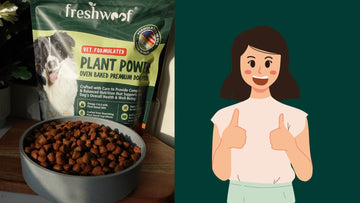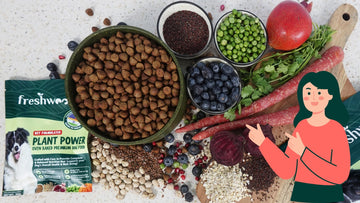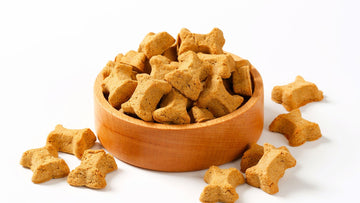We love our dogs and want to make sure they live the happiest, healthiest lives possible. One of the keys to a healthy life for our dogs is to make sure they’re eating a healthy diet but the majority of the commercial brands contain ingredients that aren’t healthy for dogs—they are generally used for one of two reasons, because they’re inexpensive, or because they help the food stay fresh longer. Either way, you don’t want your pup to consume these potential toxins regularly. Before you open another bag, can, or pouch, review the label and if you see any of the following ingredients, please reconsider feeding that to your beloved dog.
1) Harmful Chemicals & Preservatives
Preservatives such as nitrates, benzoates, sulfites, sorbates, parabens, formaldehyde, BHT, BHA, Ethoxyquin are often included in pet foods to increase their shelf life and avoid losses caused by food spoilage. These are artificial preservatives and chemicals found in some traditional dog foods and treats, used to extend their shelf life. Some brands use the general term “permitted preservatives” or just “preservatives” instead of listing the individual names of the preservatives included in the food. There are concerns that these chemicals and preservatives can be harmful with long-term exposure, ingestion, and several others can cause serious health hazards such as hypersensitivity, liver damage, allergy, hyperactivity, neurological damage, and cancer.
2) By-products and Meals
A by-product is what is left over after the intended product has been made. In the case of pet foods, it’s often the excess materials left over after processing human foods. In simple terms, by-products are the waste generated while producing food for humans. Such ingredients are nutritionally insufficient and very low quality. Meal, on the other hand, is the product of a process called rendering, where the scraps of diseased and dead animals are heated up. Meat producers take all of the leftover animal parts and cook them down to remove the fat. After the fat is removed, the meat meal remains. Rendered products can be comprised of any part of an animal, such as the offal, brain, anus, reproductive organs, intestines, stomachs, and spleens. It also could include meat from animals that were sick, as well as expired meat from grocery stores. Rendered fat can also be a potential source of Salmonella (bacteria) and toxins, which are also unsafe for your pet. And if you need more convincing that rendered products aren’t a good thing, rendered ingredients are considered unfit for human consumption. A good rule of thumb: If you’re not allowed to eat it, you might not want to give it to your pet either! There’s always a possibility of your dog eating the by-products and meals even in their “premium” meat-based dog food as many companies escape from using the words “by-products“ or “meals” in the ingredient list to make the label look fancy and premium.
3) Artificial colors and dyes
Your dog’s food may have bright colors, it likely has some artificial coloring ingredients like Blue 2 or Red 40 or Yellow. There’s no reason to artificially color pet food—it's done to make it look more appealing to humans! Artificial colors and dyes have been documented to contribute to hypersensitivity (allergic-type) reactions, behavior problems, and cancer in humans. More recently, caramel color has come under fire as it contains 4-methylimidazole (4-MIE), a known animal carcinogen (a substance capable of causing cancer).
4) Propylene Glycol and Carrageenan
These artificial additives are used in wet dog and cat food to maintain texture and consistency, keeping foods soft and moist. Although they are generally recognized as safe by the FDA, they still are artificial and unnecessary ingredients that provide zero benefits for your dog and are still of questionable safety.
5) Sodium Hexametaphosphate
Sodium Hexametaphosphate is an additive used in dental dog foods to reduce tartar build-up. It can have adverse effects when ingested. There is a possibility that it may do more harm than good, consider choosing foods that don’t include this ingredient and simply brushing your dog’s teeth instead (with a dog-friendly toothpaste).
Once you start noticing the dog food label, you’ll find that these ingredients are very common in dog foods. Meeting our pet’s nutritional requirements, but doing so with sub-standard quality and potentially toxic ingredients can cause both short and long-term health consequences.
Opting for dog food that is nutritionally complete and balanced, does not contain any of the ingredients mentioned above is the best choice you can make for your dog.
With Freshwoof you can rest assured we only include human-grade, high-quality ingredients in our recipes to provide the best to your dog! Each of our recipes is nutritionally complete and also contains the goodness of organic ayurvedic ingredients like Ashwagandha, Amla, Moringa, Ginger, and much much more to enhance your furry friend’s health!





